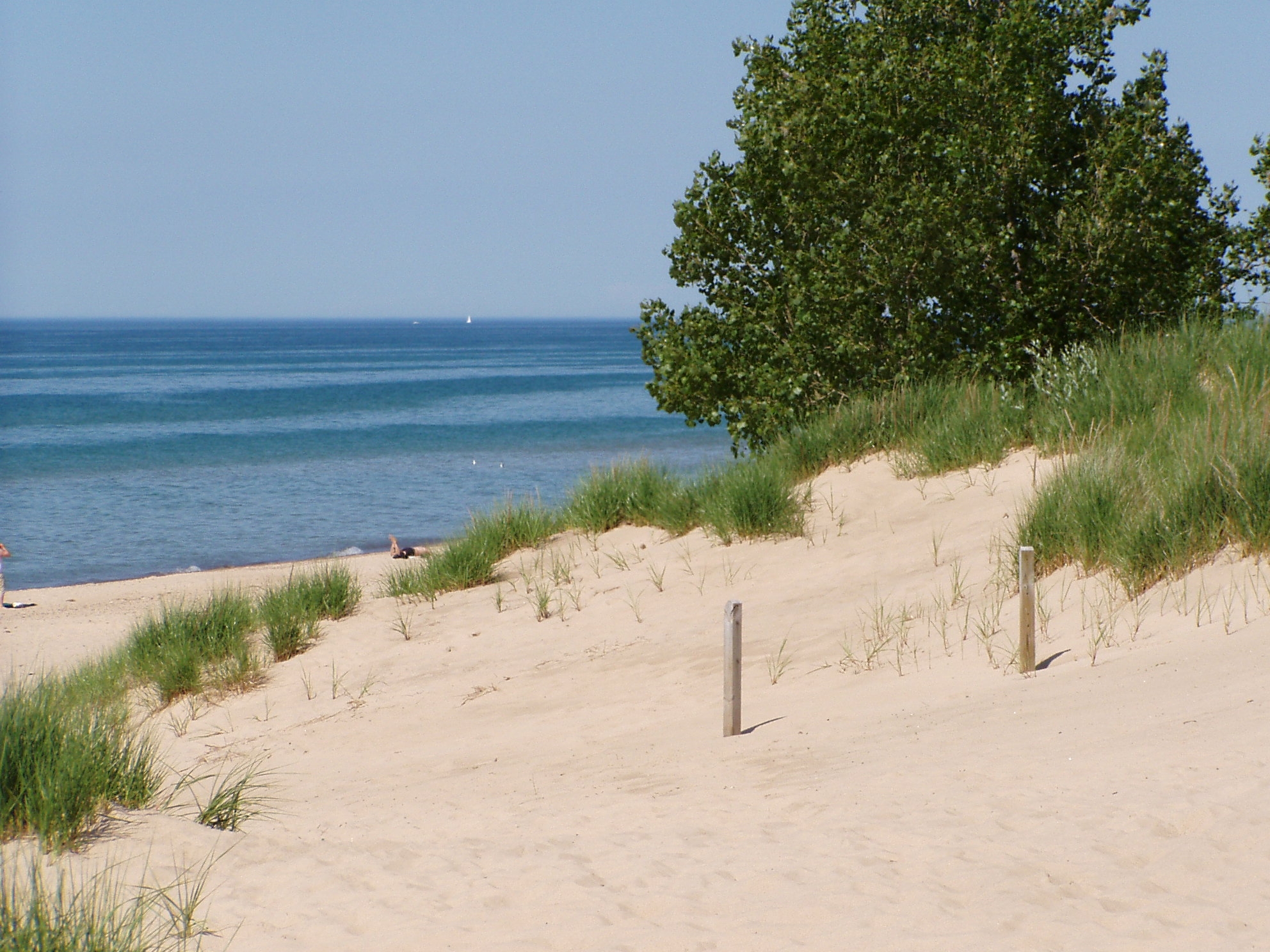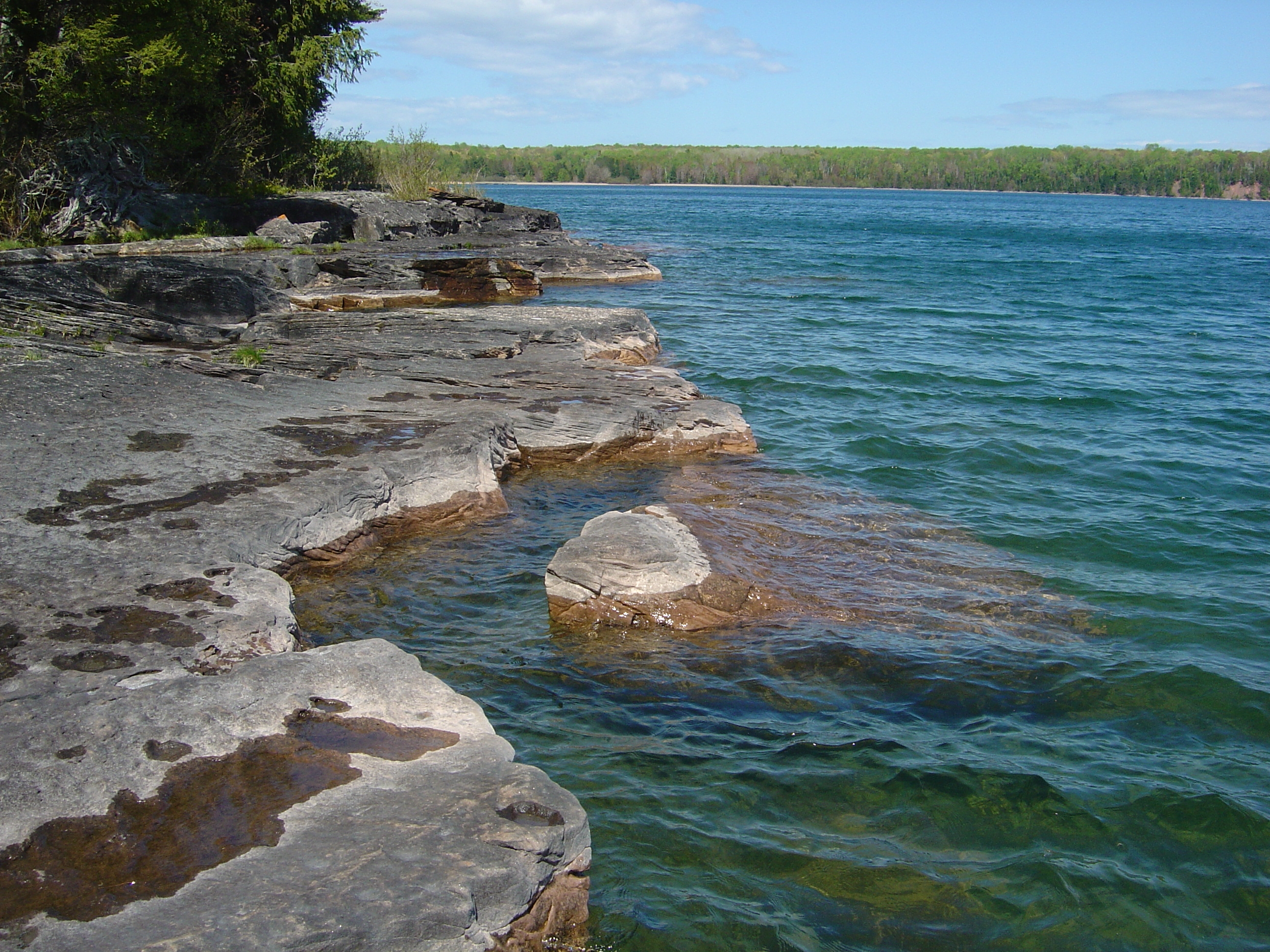
Great Lakes parks have always been popular among outdoor enthusiasts. This summer, however, pandemic-weary residents on both sides of the border flocked to them – many for the first time – just as services such as campsites, visitors’ centers, washrooms and interpretive programs were closed to help contain COVID-19.
The spike in summertime numbers was doubly challenging this year as the lakes’ record-high water levels have washed away some beaches and trails. Many parks were forced to turn away visitors as they worked to keep campers, hikers and beach-goers physically distanced on smaller parcels of land.
Indiana Dunes National Park on the southern tip of Lake Michigan, for example, saw a 34% increase in attendance in August, compared to the previous year. People came from across the region, but there was a noticeable spike from Illinois, where Chicago’s beaches were closed, said park spokesperson Bruce Rowe.
The increase would have been even greater if high water and erosion damage from storms over the winter and spring hadn’t forced staff to close three of the parks’ beaches. Portage Lakefront and Lakeview beaches were closed for part of the summer, and Central Avenue beach for the entire season.
At Portage Lakefront, the Army Corps of Engineers brought in 45,000 cubic yards of sand to help replace what was lost, at a cost of $455,000. Park staff are hoping to work with the Corps again next year on a sand nourishment project at Central Avenue beach.
West Beach – the park’s largest – still boasts about a mile of sand, allowing people to physically distance, said Rowe. But staff were forced to close smaller Porter Beach for several weeks “because of a lack of social distancing by large groups of young people,” he said.
The allure of remote areas
Social distancing wasn’t so challenging at the remote Apostle Islands National Lakeshore, comprised of 22 islands in Lake Superior in northern Wisconsin.

Sandstone shelves line the shoreline of Presque Isle Point on Stockton Island in the Apostle Islands National Lakeshore (Photo courtesy of National Park Service)
While it’s hard to get accurate attendance numbers because there is no designated entrance, visitors had a harder time getting there this year. The number of passengers allowed on cruise service to the islands was reduced by half and ferry service for campers shut down completely, said Julie Van Stappen, chief of planning and resource management.
Despite the reduced cruise capacity, visitors from 35 states – an unusually high number – booked cruises to the Apostle Islands. When they got there, they saw a changed landscape: “The high water in combination with more intense storms has really played havoc in a lot of the park,” said Van Stappen. Shorelines, docks and other infrastructure were damaged or washed away.

Sunset Point at MacGregor Point Provincial Park on Oct. 3, 2020 (Photo by Sharon Oosthoek)
On the Canadian side, Parks Ontario, which operates 32 parks bordering the Great Lakes, saw a surge in demand for its backcountry campsites. These are remote sites that can be accessed only by canoe or foot, making it easier to keep clear of other campers. After closing many of its parks in the spring, Parks Ontario saw a 29% increase in backcountry bookings when it reopened its reservation system in June.
Even at Parks Ontario’s car-accessible campgrounds, bookings were up 7% this summer, compared to last season. This was despite the fact some campgrounds closed up to half of their car-accessible campsites to encourage physical distancing. Day visits to the parks were also up.
“Some of our Great Lakes parks reached day-use capacity on several weekends in the summer,” said Ontario Parks spokesperson Megan Birrell. “This meant that we temporarily stopped selling permits to prevent over-crowding.”
Just as at Indiana Dunes, some Ontario parks, especially those bordering lakes Erie and Huron, had to turn away visitors because high water levels have shrunk beaches. Wheatley Provincial Park, Craigleith Provincial Park and Awenda Provincial Park all saw significant reduction in their day-use beach areas, said Birrell.
Increased resource damage
Meanwhile, at Cuyahoga Valley National Park south of Lake Erie near Cleveland, parking lots also filled up quickly this summer. While the park has not published attendance numbers, surveys show about 85% were first-time visitors.
“We’ve been noting some increased resource damage as far as people hiking off trail and increased social trails,” said park spokesperson Pam Barnes. “Our theory was many new visitors may not have received education on how to take care of resources when visiting a national park.”
By Lake Huron and Georgian Bay, Canada’s Bruce Peninsula National Park and Fathom Five National Marine Park saw more litter and human waste on trails this summer, said Parks Canada spokesperson Bruce MacMillan.
Capping visitor numbers, more rigorous enforcement of park rules and a reserved parking system have since helped curb the problem, he said. But not all visitors got the message about the new reserved parking system and staff had to turn away about 2,000 vehicles over an August long weekend.

Line up to get into Bruce Peninsula National Park on a typical August weekend this summer. (Photo by Sharon Oosthoek)
At Canada’s Point Pelee National Park on Lake Erie, where September saw a 30% spike in attendance over last year, staff say there was more litter, consumption of alcohol and traffic offences. In an attempt to get things under control, Parks Canada launched a nationwide #LeaveNoTrace social media strategy to inform and educate visitors about appropriate conduct.
While there is no denying this year’s boost in numbers was a challenge for Great Lakes parks, many park staff said they were happy to see area residents enjoying nature.
“This is a park for all people,” said Cuyahoga Valley’s Pam Barnes. “We were very happy to see all of these people that are new, and our goal this summer was for them to feel welcome. We hope to see them back.”
Great Lakes Now News Director Natasha Blakely contributed to the reporting for this article.
Read more on parks and on COVID-19 on Great Lakes Now:
Outdoor Escape: Visitors flock to parks, beaches, lakes as states reopen
Lack of social distancing leads to closure of parks, trails in Chicago and elsewhere
Michigan proposal’s reliance on fossil fuel money splits environmentalists
Great Lakes Now Episode 1004: Pipelines, Plastics and Parks
Great Lakes Now Episode 1019: Looking Up and Out
Test Your Knowledge: U.S. and Parks Canada National Parks in the Great Lakes region
Featured image: Lake View Beach at Indiana Dunes National Park (Photo courtesy of National Park service)




